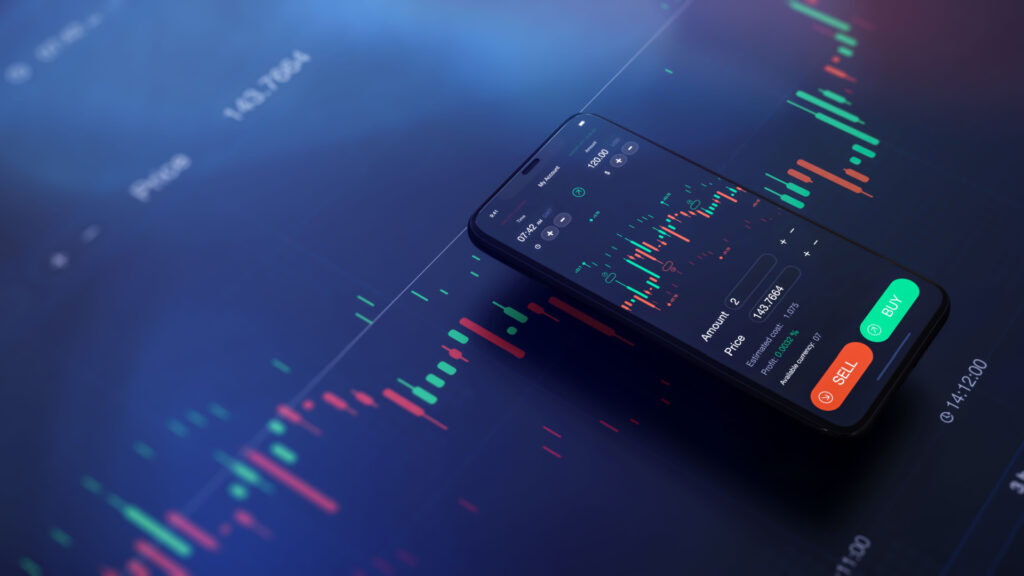What is a decentralized exchange (DEX)
A decentralized exchange (DEX) is a peer-to-peer trading platform where all transactions occur exclusively between the crypto traders themselves. DEXs implement one of the key features of decentralized finance, namely, secure financial transactions without the involvement of banks, brokers, or other controlling parties. Most popular DEXs, for example, Uniswap or Sushi Swap, work for the Ethereum blockchain.
To date, DEX is on athe wave of popularity: in the first quarter of 2021, transactions totaling $217 billion were made through them, and in April, more than 2 million traders took part in operations, which is more than twice as many as last year.
How decentralized exchange works
DEX implements interaction between blockchain networks using the cross-chain protocol, which allows users to perform operations without intermediaries (which is why DEX is also called cross-chain decentralized exchanges. However, unlike centralized exchanges (the most famous and largest of which is Coinbase), DEX platforms do not provide an opportunity to withdraw a cryptocurrency exchange for fiat. Instead, within DEXs, you can exchange tokens only for other tokens, while centralized exchanges still handle withdrawals.
But on the DEX, you can perform more advanced operations, for example, conclude margin transactions or set limit orders. Both will be processed by the DEX using the so-called "order book,” where the price of each cryptocurrency is fixed based on its current sales indicators (stock exchanges use the same method).
DEX implements all its functions through a set of smart contracts. They set prices, calculate the ratio of different cryptocurrencies to each other and control liquidity pools, with the help of which investors can earn a percentage for transactions. Thus, since centralized exchanges store all transactions within the exchange itself, the DEX transactions are recorded directly in the blockchain.
As a rule, DE X is created based on open source so that each user can check, if necessary, how and according to which algorithms it operates. This also gives the platform developer ample opportunities to optimize and improve the code, which allows the DEX to remain competitive in the market and retain a technological advantage.
Centralized exchange vs. decentralized exchange

Centralized exchanges (CEX) are crypto exchanges that act as intermediaries between the sender of a transaction and its recipient. Such platforms have clear guidance with the authority and ability to decide, making them centralized.
Each user who wants to use the functions of CEX must first register on the platform and confirm their identity. Then, cryptocurrency, which the user plans to use, is deposited in the exchange wallet, replenishing special accounts for arbitrage trading. Also, on CEXs, you can buy cryptocurrency for fiat via bank transfer or debit card.
Another critical feature of CEXs is that they offer traders different orders, including stop orders. Strict requirements for different cryptocurrencies allow CEXs to maintain the competitiveness of spreads and provide high-speed comparison and a stable price ratio in the market.
Thus, the difference between centralized and decentralized exchanges is obvious. Their purpose and tasks are completely different, so it is impossible to say which is the best solution for a trader. Nevertheless, it is possible to trade on both types of exchanges. Digital assets, in different ways: CEX verifies and carries out transactions through controlled servers, and DEX through independent, smart contracts.
Types of decentralized exchanges

There are three types of decentralized exchanges:
- Automated market makers (AMM)
This system determines the prices of traded assets by analyzing exchange data. Services that supply such information are blockchain-based and are called blockchain oracles. Instead of matching buy and sell orders through smart contracts on AMM, traders may use liquidity pools, which allow them to earn interest from transactions without permits or trust. AMM, as a rule, is ranked based on the total amount of assets frozen in the platform's smart contracts.
AMM includes platforms such as Bancor, Curve, and Sushi.
- Order book
This type is the oldest and most proven since it was with it that the development of DEX platforms began. The order book contains all data on open orders for certain trading pairs. Any buy order signals the trader's interest in an asset, which affects the price of cryptocurrencies (the stronger the interval, the higher the price). At the same time, the sell order also demonstrates the current market sentiment and demand indicators. So, the difference in the amounts between orders determines the asset's market value and the order portfolio's depth.
There are two types of order books: on-chain and off-chain. DEXs using the first type, store information openly in interconnected blocks of the blockchain. Off-chain books are essentially online storage on third-party services. An on-chain book is considered safer, while an off-chain increases traders' earnings by attracting credit funds from other platforms.
This type of DEX includes Gnosis Protocol, White Label, and IDEX.
- Aggregators
Aggregators of decentralized exchanges are protocols that specialize in finding and collecting liquidity for different DEXs based on the user's preferences. Thus, the DEX aggregator is not obliged to use only its pools to serve traders, giving traders more efficient and flexible tools for crypto trading.
The most popular DEX aggregators are Slingshot, 1inch, and Matcha.
Advantages of DEX

For several years, DEX has been in high demand due to the following advantages:
- Safe storage. DEX does not interact with traders' coins in any way, so traders remain the sole owners of private keys to access their coins and transactions. Furthermore, the decentralized exchange works only with external wallets, due to which all transactions are performed automatically through smart contracts. At the same time, centralized exchanges, for example, on the contrary, act as a repository of funds and allocate keys for access.
- Wide range of options. LEDs provide many altcoins with which CEX does not cooperate. Also, on decentralized exchanges, it is possible to make P2P transactions without large trading volumes, which increases the availability of cryptocurrencies for many users and simplifies participation in trading.
- Transactions without trust. On CEX, each transaction is verified and registered by the exchange, while on decentralized exchanges, all transactions are controlled by automatic smart contracts and entered into the blockchain. This ensures maximum security of transactions and, simultaneously, saves users from having to verify transactions in some way.
- Minimum commissions. Since smart contracts provide all the work of the DEX, the platform does not need to pay intermediaries — similar to Ethereum, the platform uses "gas." As a result, the average commission on the DEX platform is 0.3% (the price may vary depending on the type of network but remains lower than the CEX commission).
- Confidentiality. Decentralized exchanges do not require traders to provide them with private keys since they are used only in mobile, non-platform wallets. That is why DEX does not concern with traders' funds and is not responsible for them. Also, users do not need to confirm their identity and undergo KYC, which significantly simplifies the work with the platform.
Disadvantages of DEX
However, DEX has some drawbacks that should be taken into consideration:
- Poor scalability. The scalability of the blockchain always depends on the capacity of the network and the number of transactions it can process at maximum loads — for example, Bitcoin processes 4.6 TPS per second (TPS), and Ethereum — 15 TPS. Furthermore, since decentralized exchanges also work on the blockchain, they are limited by their infrastructure and cannot go beyond certain limits.
- Sophisticated user experience. DEX remains far from perfect from a user's perspective: they have a complex interface and many customizable parameters; in addition, they need to be able to connect to external wallets and make several transfers of funds before they can be sold or exchanged. So a beginner will find CEX much easier to work with since everything is automated and easily understandable.
- Low liquidity. DEXs are considered an innovation in cryptocurrencies, and although they support a wide variety of trading pairs, market segregation inevitably affects market liquidity. However, the more DeFi develops, the higher the liquidity of assets, so you just need to wait.
- Restrictions on working with cryptocurrencies. As mentioned above, it is impossible to withdraw cryptocurrency or transfer it to fiat on the DEX, so the DEX is more suitable for advanced users with a solid portfolio of assets.
How to buy crypto on a decentralized exchange

You do not need to register to start working with a decentralized crypto exchange! You only need an external wallet compatible with the smart contracts of your chosen network and a smartphone with the Internet to access the financial services of the exchanges.
So, if you want to start buying cryptocurrency on DEXs, first decide which exchange is suitable for you (they differ not only in instruments and conditions but also in transaction fees, remember this). Next, you must select a wallet that allows integration with the network and its replenishment with your own DEX coins (with these coins, your commissions will be paid).
If there is such a possibility, we advise you to use browser extensions of the wallet. So you will make it easier for yourself to access funds and work with decentralized applications (dApps), which include DEXs. Installing such extensions is no different from installing ordinary ones, except that you will be asked to import your external wallet by entering the initial phrase or creating a new one.
After you select and link the wallet, you need to replenish it with tokens in which your DEX charges a commission. You can buy such tokens only on centralized exchanges and then transfer them to a wallet linked to the DEX. We advise you to stock up on Ethereum in advance since, on most DEX, many trading fees are paid in this cryptocurrency ( namely, the "gas" necessary for conducting transactions).
Top best decentralized exchanges
As of 2023, the top list of decentralized exchanges list, according to experts, includes:
- Covo is a spot and perpetual swap exchange where you can safely trade cryptocurrencies such as Bitcoin and Ethereum.
- Uniswap is the largest exchange that has existed since 2018, and it ranked among the most popular DEXs based on the Ethereum blockchain. In addition to all the advantages of DEX, Uniswap offers users a free placement of tokens on the exchange.
- Curve Finance is a decentralized exchange platform focused primarily on stablecoins (DAI, USDT, USDC, SD, and TUSD). It belongs to the type of AMM we discussed above, thanks to which the exchange offers low commissions and spread costs. There is also an app available for UK residents.
- Pancake Swap — an exchange based on a smart chain. Here, you can buy tokens, put a CAKE in syrup pools, and participate in IFO (initial farm offers)
- DYDX is a platform with the second-level dYdX protocol, which provides high-speed transactions with minimal gas costs. Also, you can trade perpetual instruments when users agree to exchange assets in a certain period. Trades are available in various pairs, including BTC-USD, ETH-USD, and LINK-USD.
- Khyber Swap is a decentralized exchange aggregator that supports various blockchains from Ethereum to Polygon, Avalanche, and Aurora.